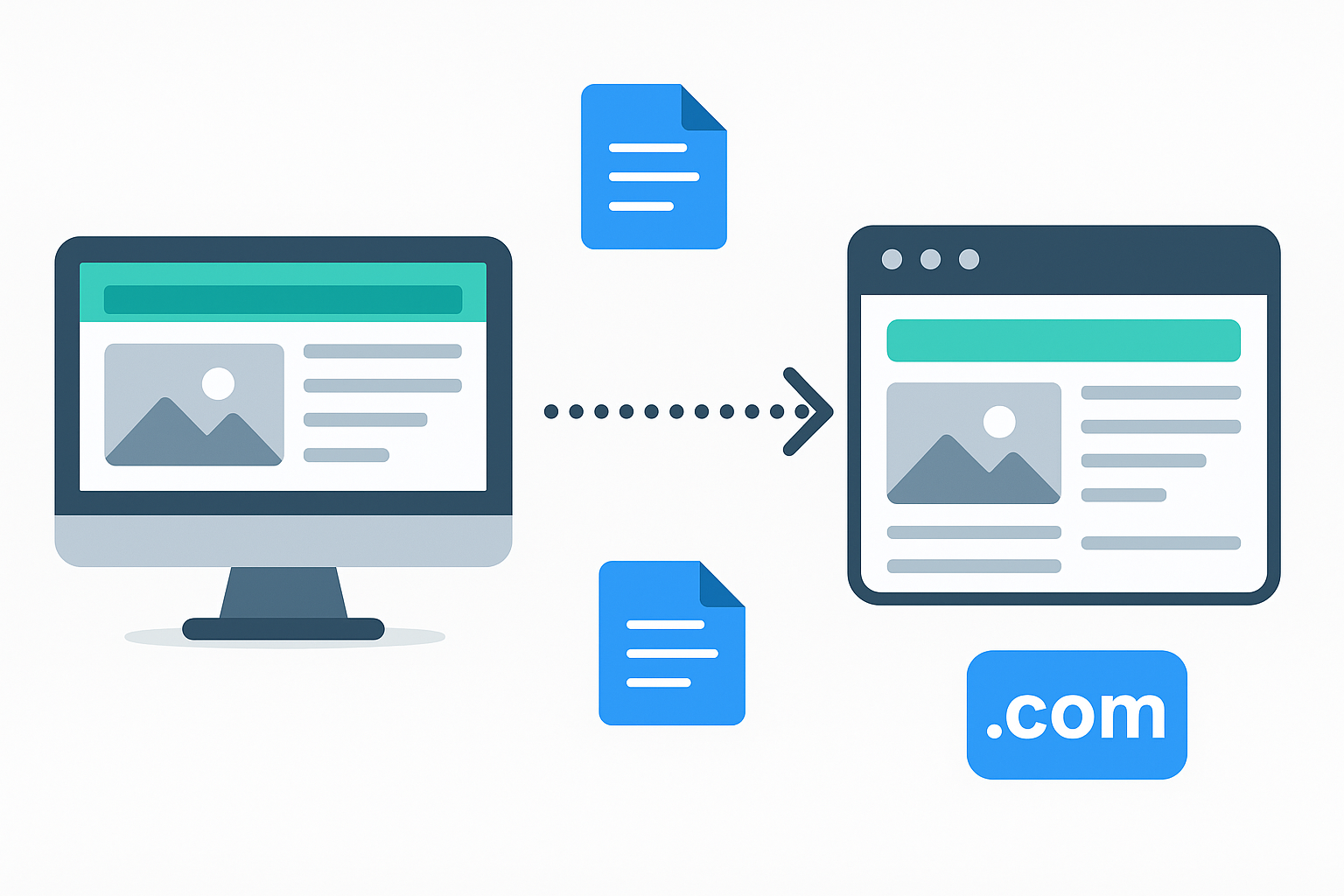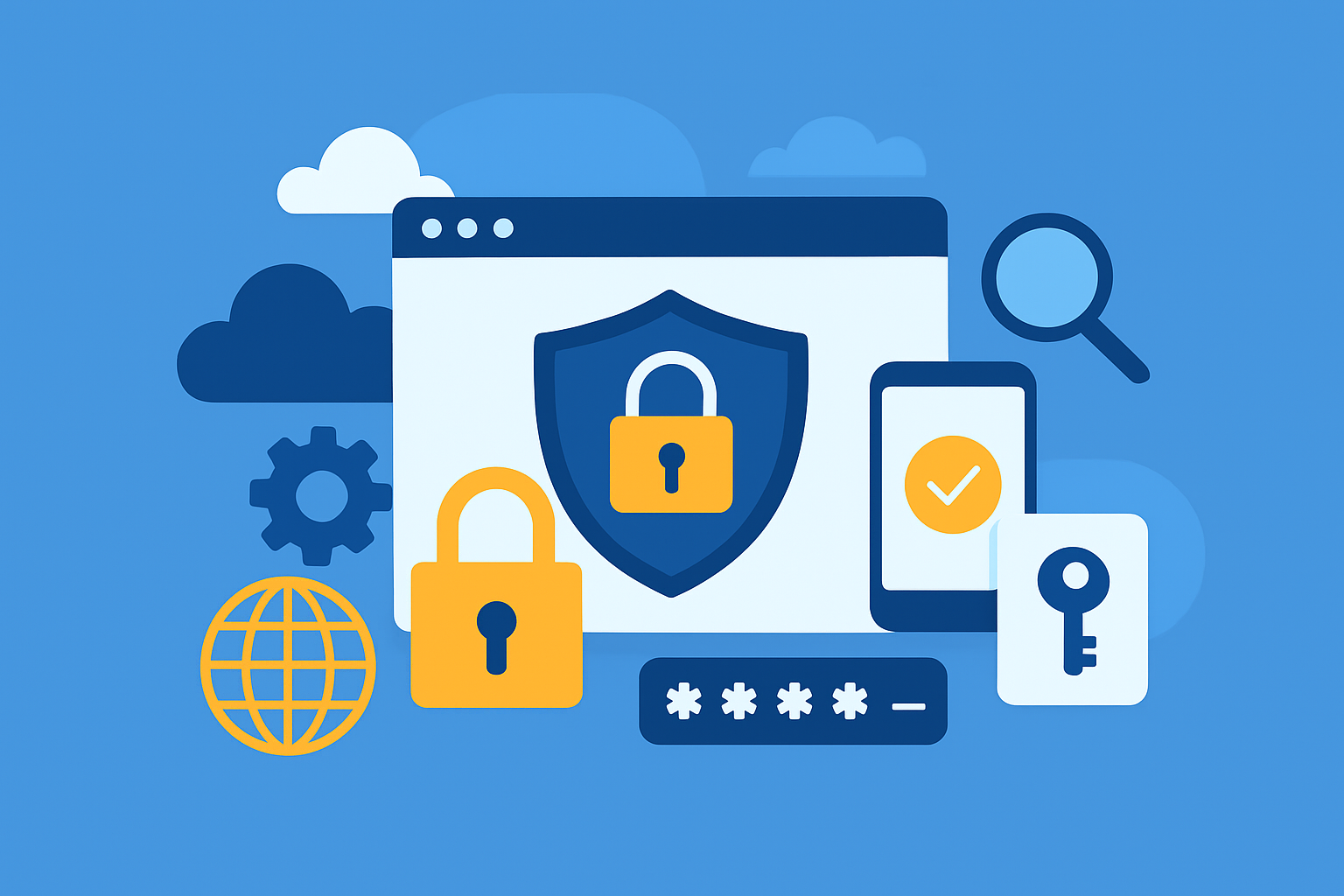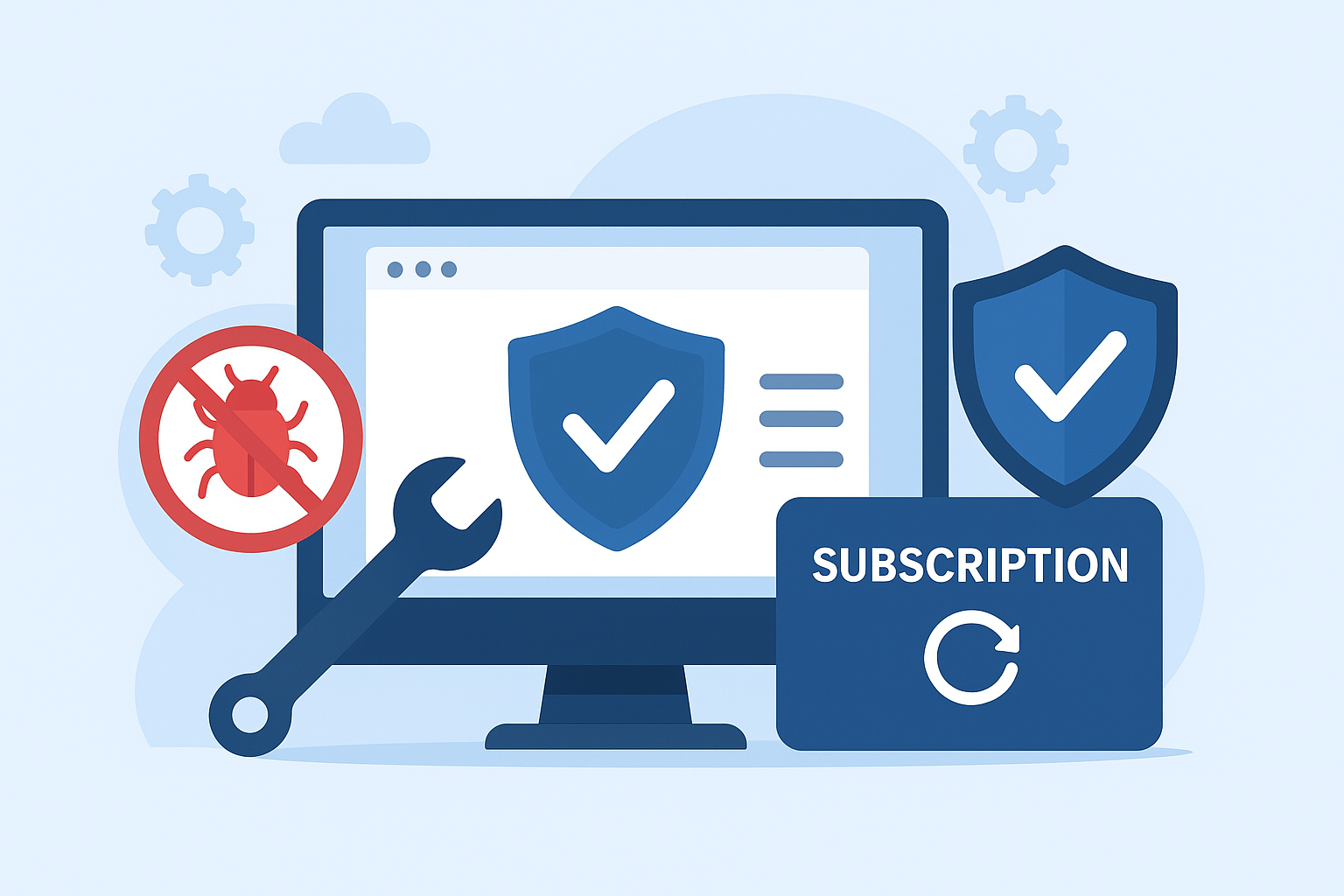Introduction to Daily Malware Monitoring
In today’s digital-first world, the security of your website is no longer optional—it is an absolute necessity. Daily Malware Monitoring plays a critical role in safeguarding your online presence from the constant threats posed by hackers, malicious scripts, and evolving cyber-attacks. This process involves the continuous scanning and analysis of your website’s files, database, and server activities to detect any suspicious behavior before it causes serious harm. By proactively identifying and removing malicious code, daily monitoring ensures that your business operations remain uninterrupted and your visitors’ data stays protected.
One of the most important advantages of Daily Malware Monitoring is that it enables you to respond immediately to threats. Instead of waiting for a customer to report an issue or for your website to get blacklisted by search engines, the system alerts you as soon as a threat is detected. This quick response time helps to minimize downtime, protect your brand reputation, and reduce financial losses caused by cyber incidents. In a digital environment where even a few hours of disruption can result in lost revenue and customer trust, this proactive security measure is a game-changer for businesses of all sizes.
Furthermore, Daily Malware Monitoring goes beyond just identifying known threats. Modern systems use AI-driven algorithms and machine learning techniques to spot unusual patterns or anomalies that might indicate an attack in progress, even if it’s a zero-day exploit. This means your website stays ahead of the curve, prepared to counteract threats before they can fully develop. As cybercriminals continue to advance their methods, continuous and intelligent monitoring becomes the cornerstone of a strong website security strategy, giving you the confidence that your online presence is safe every single day.
Why Daily Malware Monitoring is Essential in 2025
In 2025, the landscape of cybersecurity threats has become more complex, sophisticated, and relentless than ever before. Cybercriminals are using advanced AI-powered attacks, ransomware campaigns, and stealthy malware infections that can remain undetected for weeks or even months. This evolving threat environment makes Daily Malware Monitoring not just an option, but an absolute necessity for any business or individual with an online presence. With websites acting as critical gateways for communication, sales, and brand representation, even a minor security lapse can result in devastating consequences, including financial losses, damaged reputation, and legal liabilities.
Unlike occasional scans or reactive security measures, Daily Malware Monitoring provides continuous protection by detecting and addressing threats in real time. In 2025, waiting for a monthly or even weekly scan is no longer sufficient, as malware can infiltrate, spread, and cause irreversible damage within hours. By implementing 24/7 scanning systems, website owners can ensure that any suspicious code, unauthorized changes, or malicious activities are identified and neutralized before they escalate into a full-scale breach. This proactive defense is crucial in an era where downtime and data leaks can instantly lead to lost customer trust and search engine blacklisting.
Moreover, regulatory compliance has become stricter in 2025, with global data protection laws holding businesses accountable for safeguarding user information. Daily Malware Monitoring supports compliance by maintaining a secure environment and providing the necessary logs and reports to demonstrate due diligence. As cyber threats grow more advanced, only a real-time, intelligent, and adaptive monitoring system can offer the level of protection required to stay ahead of hackers. In essence, 2025 demands a security-first mindset, and Daily Malware Monitoring is the cornerstone of that approach. Without it, businesses risk falling victim to attacks that could have been easily prevented.
How Malware Infects Websites
In the digital landscape of 2025, cybercriminals have developed highly sophisticated methods to infiltrate websites, often exploiting the smallest vulnerabilities. Malware infections typically occur when hackers identify weak points in outdated software, insecure plugins, or poorly configured servers. Once a vulnerability is found, they inject malicious code into the website’s files or database, enabling them to steal data, redirect visitors to harmful sites, or gain full control over the server.
One common method is SQL injection, where attackers manipulate database queries to access sensitive information. Another widespread tactic is cross-site scripting (XSS), which allows them to insert harmful scripts into web pages viewed by unsuspecting visitors. Phishing injections, compromised third-party integrations, and brute-force attacks on weak passwords are also popular strategies for spreading malware.
Once inside, the malware often works silently, avoiding detection while gradually causing damage. It can infect multiple files, create hidden admin accounts, or even spread to visitors’ devices. Without continuous security monitoring, these infections can persist for weeks, harming SEO rankings, eroding customer trust, and risking legal consequences. Ultimately, understanding how malware infects websites is the first step toward implementing strong, proactive defenses that can stop attacks before they succeed.
Types of Malware Threats Websites Face
In the ever-evolving cybersecurity landscape of 2025, websites face a variety of malware threats that can compromise functionality, steal sensitive data, and damage reputations. One of the most dangerous is ransomware, which encrypts website files and demands payment for restoration. Another major threat is spyware, designed to secretly gather user data such as login credentials, payment information, or browsing habits without detection.
 Trojan malware disguises itself as legitimate software or files, tricking administrators into installing it, which then opens backdoors for attackers. Defacement attacks alter a website’s appearance, often to display malicious content or propaganda, harming brand trust instantly. SEO spam injections are another prevalent issue, inserting hidden links or keywords into a website to boost malicious sites in search engine rankings.
Trojan malware disguises itself as legitimate software or files, tricking administrators into installing it, which then opens backdoors for attackers. Defacement attacks alter a website’s appearance, often to display malicious content or propaganda, harming brand trust instantly. SEO spam injections are another prevalent issue, inserting hidden links or keywords into a website to boost malicious sites in search engine rankings.
Cryptojacking scripts have also become common, secretly using a website’s server resources to mine cryptocurrency, slowing performance and increasing hosting costs. These threats often work silently in the background, making daily malware monitoring essential for detection and removal. By understanding the different types of malware that target websites, businesses can better prepare and implement multi-layered security measures to safeguard their online presence and protect their users.
The Impact of Undetected Malware on Your Business
Undetected malware can have a devastating effect on a business, both in the short term and long term. When malicious code hides within your website without detection, it can silently steal sensitive customer data, leading to severe privacy breaches and potential legal consequences. This not only damages customer trust but also harms your brand’s reputation, making recovery difficult and costly.
In many cases, malware infections can slow down website performance, cause downtime, or redirect visitors to harmful sites, resulting in a loss of sales and reduced search engine rankings. Search engines like Google may blacklist your site entirely, cutting off organic traffic and significantly impacting your online visibility.
The longer malware remains undetected, the deeper it can infiltrate your systems, leading to more complex and expensive recovery efforts. Additionally, cybercriminals may exploit your compromised website to launch further attacks on your clients or partners, creating a chain reaction of security issues. In today’s competitive digital environment, daily malware monitoring is no longer optional—it is a critical measure to protect your revenue, reputation, and long-term business sustainability.
How Daily Malware Monitoring Works
Daily malware monitoring functions as a proactive security measure that continuously scans your website for signs of malicious code, suspicious activities, and vulnerabilities. Instead of waiting for visible issues to arise, this process works silently in the background, identifying threats at the earliest stage. It relies on advanced scanning algorithms, signature-based detection, and heuristic analysis to uncover even hidden or newly developed malware strains.
The system performs automated daily scans of your website’s files, databases, and server environments, checking for unauthorized modifications or abnormal patterns in traffic. When malware or suspicious activity is detected, the system immediately triggers real-time alerts, allowing website owners or security teams to take swift action before the issue escalates.
Some monitoring tools also integrate with machine learning to adapt to evolving threats, ensuring that even zero-day vulnerabilities are spotted quickly. This daily process reduces the risk of long-term infections, prevents search engine blacklisting, and safeguards user trust. By detecting threats early, daily malware monitoring not only minimizes downtime and damage but also ensures your website remains secure, functional, and compliant with modern cybersecurity standards in 2025’s rapidly evolving digital landscape.
The Role of Artificial Intelligence in Malware Detection
Artificial Intelligence (AI) has revolutionized malware detection by enabling systems to identify threats with greater speed and accuracy. Unlike traditional methods that rely solely on known virus signatures, AI-powered detection uses machine learning algorithms to analyze patterns, detect anomalies, and predict potential attacks before they occur. This adaptive approach allows it to recognize new and evolving malware strains that might bypass conventional security tools. By continuously learning from massive datasets, AI systems enhance real-time monitoring, reduce false positives, and ensure faster response times, making them an essential component of modern cybersecurity in 2025.
Real-Time Alerts and Response Systems
Real-time alerts and response systems have become a critical component of modern cybersecurity, especially for protecting websites against rapidly spreading malware threats. In 2025, the speed at which an attack is detected and neutralized can determine whether a business experiences minor disruptions or suffers severe damage. These systems work by continuously monitoring website activity, scanning for unusual behavior, and instantly notifying administrators the moment suspicious activity is detected. This instant communication allows security teams to take immediate action, preventing the spread of malware and minimizing downtime.
With real-time alerts, the process of identifying threats is no longer dependent on manual scans or delayed reports. Instead, the system can trigger automated responses such as quarantining infected files, blocking malicious IP addresses, or temporarily shutting down vulnerable access points. This proactive defense significantly reduces the window of opportunity for cybercriminals to exploit weaknesses. Furthermore, real-time response systems integrate with advanced threat intelligence and AI-driven analytics, ensuring that the actions taken are not just fast but also precise, avoiding unnecessary disruptions to legitimate website functions.
In an era where cyber threats evolve by the second, real-time alerts and response systems provide the speed, accuracy, and adaptability needed to safeguard online assets, protect customer trust, and maintain uninterrupted business operations.
Daily Malware Monitoring vs. One-Time Scans
Daily malware monitoring and one-time scans are two very different approaches to website security, each with its own strengths and weaknesses. One-time scans involve a single security check that identifies existing malware or vulnerabilities at a specific point in time. While this can be useful for quickly detecting and removing current threats, it leaves the website unprotected against future attacks that may occur moments after the scan. This reactive approach is often insufficient in today’s fast-moving cyber landscape, where new malware variants appear daily and can infiltrate a site within minutes.
On the other hand, daily malware monitoring provides continuous protection by scanning the website every day, detecting threats as soon as they emerge. This proactive defense ensures that harmful code is identified and removed before it can cause serious damage, steal sensitive data, or disrupt business operations. The constant surveillance also helps detect subtle, hard-to-spot changes that one-time scans might miss, such as backdoors left by hackers for future exploitation.
Businesses that rely on their websites for revenue and customer trust cannot afford long gaps between security checks. Daily monitoring minimizes downtime, reduces recovery costs, and helps maintain SEO rankings by preventing blacklisting from search engines. In contrast, one-time scans might seem cost-effective initially, but they can lead to significant losses if threats remain undetected until they cause visible harm. In the modern threat environment, daily malware monitoring offers far greater peace of mind and long-term protection than relying solely on a one-time scan.
Compliance with Data Protection Regulations
In today’s digital world, compliance with data protection regulations is not just a legal requirement but a critical component of building trust with customers and protecting a business’s reputation. Laws such as the General Data Protection Regulation (GDPR), California Consumer Privacy Act (CCPA), and other regional frameworks mandate that businesses take active measures to safeguard personal and sensitive information from cyber threats. Failure to comply can lead to heavy fines, legal action, and a significant loss of customer trust.
Daily malware monitoring plays a crucial role in maintaining this compliance. By continuously scanning for malicious code, vulnerabilities, and unauthorized access, businesses can ensure that sensitive customer data is not compromised. This proactive approach allows organizations to detect and respond to threats before they escalate into serious breaches, which could otherwise result in regulatory violations. Continuous monitoring also provides detailed security logs, which serve as valuable evidence during compliance audits, demonstrating that the business has taken consistent steps to protect user data.
Additionally, compliance regulations often require prompt breach notifications, and with real-time alerts from daily monitoring, companies can meet these obligations swiftly. This level of preparedness not only prevents costly penalties but also reinforces a brand’s commitment to privacy and security. In an era where cybercriminals are constantly evolving their tactics, adhering to data protection regulations is not just about meeting legal standards—it’s about protecting the integrity of your business and preserving customer confidence. Daily malware monitoring ensures you stay compliant while staying ahead of threats.
Website Performance Benefits of Daily Monitoring
A lesser-known benefit of daily malware monitoring is the improvement in website performance. Malware often consumes server resources, slowing page load times and degrading user experience. By detecting and removing malicious scripts promptly, your website remains fast, responsive, and reliable. This has a direct impact on user engagement, SEO rankings, and ultimately, conversion rates.
Cost Savings Through Proactive Security
In the rapidly evolving digital landscape, cost savings through proactive security has become a cornerstone for sustainable business operations. Instead of waiting for a cyberattack to occur and then dealing with the expensive aftermath, companies that invest in preventive measures such as daily malware monitoring, firewalls, and real-time alerts significantly reduce long-term expenses. The cost of recovering from a major breach—covering data recovery, downtime, legal fees, regulatory fines, and reputation damage—can easily surpass the investment required for robust, ongoing protection.
 Proactive security identifies and neutralizes threats before they cause harm, ensuring systems remain operational and customer trust intact. This approach minimizes downtime, which is often one of the most costly consequences of a cyber incident. Moreover, businesses avoid the financial and operational strain of replacing compromised systems, restoring lost data, or paying ransomware demands. These preventive actions also reduce insurance premiums, as companies with strong cybersecurity postures are often considered lower risk by insurers.
Proactive security identifies and neutralizes threats before they cause harm, ensuring systems remain operational and customer trust intact. This approach minimizes downtime, which is often one of the most costly consequences of a cyber incident. Moreover, businesses avoid the financial and operational strain of replacing compromised systems, restoring lost data, or paying ransomware demands. These preventive actions also reduce insurance premiums, as companies with strong cybersecurity postures are often considered lower risk by insurers.
Another key advantage is predictable budgeting. Instead of unpredictable, high-cost emergencies, businesses can plan their cybersecurity expenses with clarity, knowing they are safeguarding assets while controlling spending. In addition, proactive monitoring provides valuable insights into system performance and potential vulnerabilities, enabling smarter resource allocation and reducing wasteful spending on unnecessary tools or reactive solutions.
Ultimately, cost savings through proactive security is about shifting from a reactive “fix it when it breaks” mindset to a forward-thinking strategy. This ensures financial stability, operational resilience, and long-term protection against the ever-growing landscape of cyber threats.
Integrating Daily Malware Monitoring with Other Security Measures
In today’s complex cybersecurity environment, integrating daily malware monitoring with other security measures is essential for building a truly resilient defense system. While daily monitoring plays a crucial role in detecting threats in real time, it becomes far more effective when combined with a layered approach that includes firewalls, intrusion detection systems, data encryption, and regular security audits. This integration ensures that even if a threat bypasses one defense, it will likely be detected and blocked by another, creating multiple layers of protection.
Daily malware monitoring serves as the first line of defense, continuously scanning for suspicious activity and malicious code. When paired with strong access controls, multi-factor authentication, and secure backup solutions, it ensures that potential threats are detected early, contained quickly, and remediated before they cause significant damage. This synergy reduces the window of opportunity for cybercriminals and minimizes the risk of undetected breaches.
Another major advantage of integration is the centralization of security intelligence. By linking monitoring systems with incident response tools and analytics platforms, organizations can respond to threats faster and more effectively. This not only improves reaction time but also enhances the accuracy of threat identification, reducing false positives and focusing resources where they are truly needed.
Ultimately, integrating daily malware monitoring with other security measures transforms isolated protective actions into a cohesive, adaptive, and proactive defense strategy. This layered approach maximizes protection, strengthens resilience against evolving threats, and ensures that cybersecurity efforts work together to safeguard both data and business continuity.
Choosing the Right Daily Malware Monitoring Service
Selecting the right daily malware monitoring service is a critical decision for any business aiming to protect its digital assets from constant and evolving cyber threats. With numerous options available, it’s essential to evaluate each service based on reliability, detection capabilities, and the level of protection it offers. A high-quality service should not only detect malware but also provide instant alerts, detailed threat reports, and actionable steps for remediation.
One of the most important factors to consider is the accuracy and speed of detection. A reliable service should have the ability to identify threats in real time, preventing potential damage before it escalates. Equally important is compatibility — the chosen solution must integrate smoothly with your existing security infrastructure without causing performance issues.
Customer support and technical assistance are also crucial. Even the most advanced systems may encounter issues, so having a dedicated team available to resolve problems quickly ensures continuous protection. Additionally, consider whether the service includes extra features such as vulnerability scanning, automatic malware removal, or historical threat analysis to enhance long-term security.
Pricing is another factor, but it should not be the sole deciding point. While budget-friendly options can be appealing, compromising on security can lead to costly breaches. Instead, focus on value — finding a service that balances affordability with advanced protection.
Ultimately, choosing the right daily malware monitoring service means selecting a solution that offers accuracy, speed, compatibility, and support, ensuring your business stays safe from ever-evolving cyber threats.
Case Study: How Daily Malware Monitoring Saved a UK E-Commerce Store
Consider the example of a UK-based e-commerce business that experienced repeated malware infections. After implementing a daily malware monitoring service, suspicious activity was detected within minutes of an attempted attack. The infected files were quarantined, and the business avoided downtime and data theft. This case illustrates how continuous monitoring can prevent costly disruptions and protect brand reputation.
The Future of Malware Monitoring Services
The future of malware monitoring services is set to be defined by advanced technologies, smarter detection methods, and a more proactive approach to cybersecurity. As cyber threats continue to evolve, traditional reactive methods are no longer sufficient. Modern solutions will rely heavily on artificial intelligence, machine learning, and behavioral analytics to detect even the most sophisticated malware before it causes harm. These technologies will allow systems to adapt in real time, identifying new attack patterns without waiting for signature updates.
Cloud-based malware monitoring is also expected to become the standard, offering businesses scalability, speed, and global threat intelligence. By leveraging shared data from millions of endpoints, these systems will be able to detect threats faster and more accurately, providing an extra layer of collective defense. Moreover, predictive threat analysis will play a crucial role, allowing organizations to prevent breaches by identifying vulnerabilities before they are exploited.
Integration with other cybersecurity measures will be seamless, creating a unified defense system that combines malware detection with firewalls, intrusion prevention systems, and automated response tools. This will significantly reduce the time between threat detection and resolution, minimizing potential damage.
The future will also see stronger compliance-focused monitoring, ensuring that businesses meet stringent data protection laws while maintaining high security standards. With cybercriminals becoming more sophisticated, the evolution of malware monitoring services will be essential in staying one step ahead, protecting not just data but also the reputation and trust businesses have built with their customers.
Conclusion: The Necessity of Daily Malware Monitoring
In today’s fast-paced digital environment, daily malware monitoring is no longer a luxury—it is a necessity for every business that values its security, reputation, and customer trust. Cyber threats are becoming more sophisticated and frequent, targeting vulnerabilities at any given moment. Without consistent monitoring, these threats can go undetected, leading to data breaches, financial losses, and irreparable brand damage. Implementing daily scanning and detection ensures that malicious activities are identified and neutralized before they escalate into serious problems.
The importance of proactive protection cannot be overstated. Waiting for an attack to occur before taking action is a costly mistake. Instead, businesses must adopt preventive measures that work around the clock, safeguarding websites, customer data, and internal systems. Advanced daily monitoring services leverage artificial intelligence, machine learning, and real-time analytics to detect even the most elusive threats, making them a vital part of any robust cybersecurity strategy.
At FixHackedSite, we understand that security is an ongoing battle. Our services are designed to provide constant vigilance, ensuring that threats are detected and resolved immediately. By integrating daily malware monitoring into your security plan, you protect not only your website but also the trust your customers place in you.
Ultimately, daily malware monitoring is the cornerstone of modern cybersecurity. It offers peace of mind, compliance with data protection laws, and a strong defense against ever-evolving cyber risks. In an era where attacks can happen at any time, staying protected 24/7 is not optional—it is essential.



